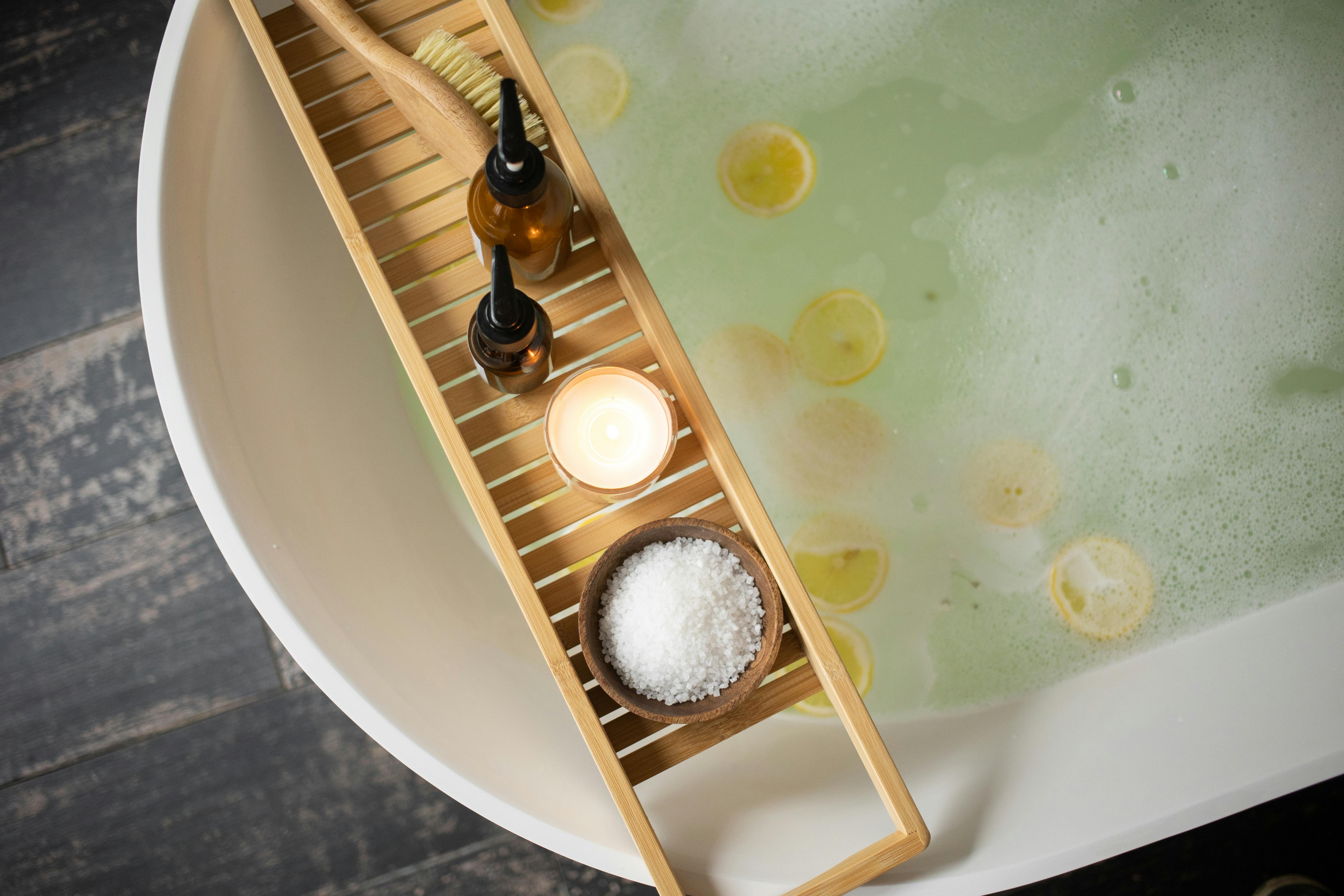Distilling salt water is a process used to remove salt from the water, making it safe to drink. It is a very simple process and can be done with everyday items found in most households. In this guide, we will discuss the basics of how to distill salt water and provide a step-by-step breakdown of the process. With some patience and a few simple tools, you’ll be able to turn salt water into clean drinking water in no time at all.To distill salt water using heat, start by boiling the salt water in a pot over a stove. As the water boils, it will evaporate into steam, leaving behind any impurities and the dissolved salt. The steam can then be collected and cooled in a separate container. As it cools, the steam will turn back into liquid, which is now fresh and drinkable water.
How To Distil Salt Water Using Evaporation
Distilling salt water using evaporation is a great way to make fresh, drinkable water. This process has been used for centuries by sailors and islanders all over the world. In essence, evaporation is the process of turning liquid into a gas. When you heat salt water, the water molecules evaporate and leave behind the salt crystals. This process can be used to create freshwater from saltwater. Here’s how you do it:
First, gather your materials. You will need a pot or other container with a lid, an oven mitt or pot holder, some ice cubes or cold water, and of course, some saltwater. Fill the pot with the saltwater and place it on a stovetop burner over medium-high heat.
Once the water starts to boil, reduce the heat to low and cover the pot with a lid. As the water boils off, it will condense on the inside of the lid and run down into another container that you have placed near by. Make sure that your container is big enough to hold all of
How To Make A Solar Still For Distilling Salt Water
Making a solar still is a great way to produce clean drinking water from salty or contaminated sources. It is an easy and cost-effective way to purify water in remote locations without electricity or other tools. The process involves using the sun’s heat and evaporation to separate the fresh drinking water from the salt and contaminants. With some basic materials, you can build your own solar still to distill salt water into clean drinking water.
The first step in making a solar still is to gather the materials needed for construction. You will need a large plastic container, such as an old garbage can or large bucket, some food grade PVC pipes and fittings, several feet of clear vinyl tubing, some rocks or stones for weighting down the container, and a piece of screen material large enough to cover the top of the container.
Once you have gathered all of your materials, it’s time to start building your solar still. Start by cutting a hole in the center of the container lid that is large enough for your PVC pipe and fittings to
Distilling Salt Water With A Boiling Point Method
Distilling salt water with a boiling point method is a simple and effective way of separating salt from the water. The process involves heating the water until it reaches its boiling point, at which point it changes from liquid to vapor. The vapor then rises and is collected in a condenser, where it cools back down into liquid form. This liquid, now free of salt, can be safely consumed as fresh drinking water.
The main benefit of distilling salt water with a boiling point method is that it is highly efficient and cost-effective. It requires relatively little energy to heat the water up to its boiling point, compared to other methods such as evaporation or reverse osmosis. Additionally, the process can be easily scaled up or down depending on the amount of water that needs to be treated.
In order to distill saltwater with a boiling point method, you will need access to a heat source and some type of condenser such as a metal coil or tube. First, the heat source is used to bring the temperature of the saltwater up to its boiling point
How To Separate Salt From Water With Filtration
Filtration is a process used to separate solid particles from a liquid. This process can be used to separate salt from water. The process requires using filtration equipment, such as a filter paper, and gravity to separate the two components. Here is how to separate salt from water with filtration:
Step 1: Gather Your Equipment. You will need a filter paper, beaker, stirring rod, and salt solution. The filter paper should be pre-folded into a funnel shape and placed in the beaker.
Step 2: Add the Salt Solution. Carefully pour the salt solution into the beaker until it is about ¾ full. Make sure that the filter paper remains in place.
Step 3: Stir the Solution. Use the stirring rod to gently stir the solution for several minutes. This will help ensure that all of the particles are evenly distributed throughout the solution.
Step 4: Filter the Solution. Place a clean container beneath the filter paper and carefully pour the salt solution into it

Pros Of Distilling Salt Water
Distilling salt water is a process that has been used for centuries to provide safe drinking water. The main advantage of this method is that it removes all dissolved salts, as well as other contaminants, from the water. This makes it far safer to drink than untreated seawater. In addition, distillation is a relatively easy and inexpensive process, which makes it ideal for use in areas with limited infrastructure or resources. Furthermore, the process can be done on a small scale and does not require any special equipment or chemicals.
Cons Of Distilling Salt Water
Unfortunately, there are also some drawbacks to distilling salt water. The most significant of these is the fact that it only removes dissolved salts from the water; any solid particles such as sediment or algae will remain in the liquid after distillation. This means that it may still be necessary to filter or otherwise treat the water before consumption. In addition, distillation is a relatively slow process; depending on the size of the apparatus used, it can take several hours to produce one litre of pure water. Finally, due to its energy
Safety Considerations When Distilling Salt Water
Distilling salt water can be a dangerous process if not done with the proper safety precautions. It is important to take the necessary steps to ensure the safety of those involved and the environment. The following are some key safety considerations when distilling salt water:
1. Wear appropriate protective clothing when distilling salt water. This includes long sleeves, gloves, and safety goggles. This will help protect you from any potential burns or splashes of hot liquid during the process.
2. Make sure all equipment is properly maintained and in good working order before beginning the distillation process. This includes checking for leaks or any signs of corrosion in the pipes and tubing used for distillation, as well as inspecting all electrical components for any damage or defects.
3. Ensure that all chemicals used in the distillation process are handled and stored properly. These chemicals can be hazardous if not handled with care, so it is important to keep them out of reach of children and pets and away from sources of heat or open flames.
Supplies Needed For Distilling Salt Water
Distilling salt water can be a simple process, but requires some specialized supplies in order to do it correctly. The most important pieces of equipment you will need are a distiller, collection container, and heat source. A distiller is a device designed to separate the water from other compounds, like salt, through the process of evaporation and condensation. The collection container is used to collect the distilled water after it has been separated from the salt. Lastly, you will need a heat source such as a stove or hot plate to provide the energy necessary for the distillation process. Other supplies that may be required include tubing or hose to connect the components together as well as a filter for removing any remaining impurities from the distilled water.
It is also important to have basic safety supplies on hand including safety goggles and gloves. This helps protect you from any potential hazards associated with using boiling liquids and heated surfaces. Additionally, having a fire extinguisher nearby is always a good idea in case of an emergency. Finally, make sure you have plenty of clean containers available for storing your distilled water safely once it has been collected.
Conclusion
Distilling salt water is a relatively simple process that can be done at home with minimal supplies. It can also be done on a commercial scale, allowing for large amounts of water to be purified. While it is not a perfect solution, distillation is an effective way to make salt water drinkable. It has been used for centuries and continues to be used today as a viable option for water purification.
When distilling salt water, it is important to remember that the process does not remove all contaminants from the water, and that additional steps may need to be taken in order to make the water safe for consumption. Additionally, the process can take some time and requires careful monitoring in order to ensure that the desired results are achieved.
Overall, distilling salt water is an effective way of making seawater drinkable. With proper technique and attention to detail, anyone can create their own distilled saltwater from the comfort of their own home.

